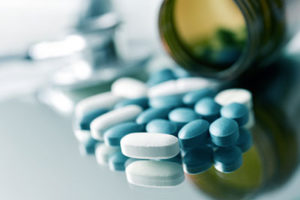Suboxone is a medication that made headlines for its ability to effectively reduce symptoms of withdrawal in heroin and opioid users. This is especially useful during a crisis never before seen in U.S. history.
Currently, there are at least 115 people dying daily because of opioid-related misuse and addiction. This ranges from prescription pain relievers, heroin, and synthetic opioids such as fentanyl. Not only is this having a burden on families across the country, but the United States is being impacted immensely financially.
The U.S. Centers for Disease Control and Prevention (CDC) estimates that the United States incurs $78.5 billion in lost productivity and criminal justice involvement.
Anyone who has tried to quit opioids can attest to how difficult the process can be. While it’s not a dangerous process, it can feel like the worst flu someone has ever had. For this reason, a majority of those who try to quit opioids alone do not succeed.
This is why Suboxone was created. It combines two medications that can help block opioid cravings and allow someone to transition back into a sober state more comfortably. The intention of Suboxone was never to be addictive, but Suboxone itself is an opioid, which means it has its own risks, including addiction.
Giving drugs to recovering substance users has always been a controversial topic, and that is especially the case for Suboxone. There are stories that highlight Suboxone not ending their drug addictions but only fueling them. While there are positive results, it seems the majority will not benefit from drug therapy as a means to end their addiction. One recovering user is on the record saying, “I knew I was going to get my next hit, it was just coming from a doctor.”
It’s about harm reduction, plain and simple, but that’s not always the case. For many, it will suppress cravings and allow recovering users to get through the worst of the withdrawals and give them a better chance at long-term sobriety. For many others, it will just continue to encourage active addiction and not treat the root of the problem.
Addiction treatment is something that should always involve a unique and customized approach. For some, this will work, and for many others, it will not. The point being raised is to distinguish who will benefit from this and who will not. That is the sign of an effective treatment center.
What Is Suboxone?

Suboxone is a medication available only by prescription that is used in the treatment of opioid addiction. The objective of the drug is to block withdrawal symptoms and reduce cravings. It is often administered as a sublingual strip to be placed under the tongue. This allows for a faster-acting method that can make the user feel better sooner.
Suboxone is the combination of two widely known opioid medications known as buprenorphine and naloxone. The drug is considered a partial opioid agonist, which means that buprenorphine produces a mild effect when acting on the opioid receptors within the brain. Opioids such as oxycodone, hydromorphone, morphine, methadone, and heroin are all considered full agonists. This is why they have a much higher potential to be abused.
The Substance Abuse and Mental Health Services Administration (SAMHSA) has released a report that highlights the benefits of buprenorphine, saying the medication:
- Lowers the potential for misuse
- Diminishes the effects of physical dependence on opioids, such as withdrawal symptoms and cravings; and
- Increases safety in case of overdoses
Suboxone is a drug that is frequently used at medical detoxification centers, and it is also used during medication-assisted treatment (MAT) to help alleviate the worst effects of opioid withdrawal. The drugs are used in conjunction with counseling and behavioral therapies as a means to seek alternative solutions when dealing with opioid addiction.
The other active ingredient, naloxone, which is known as Narcan, completely blocks full agonist opioids from attaching to opioid receptors. The purpose of adding this drug was to curb any misuse are a result of Suboxone therapy.
Common Suboxone Street Names
As you find with most drugs, some nicknames accompany Suboxone’s presence. Some of the most popular slang can include:
- Bupes
- Boxes
- Saboxins
- Sobos
- Oranges
- Stops or stop signs
- Subs
Suboxone Dosage Amounts
If a drug user is switching from methadone to Suboxone, they will require less Suboxone than someone coming directly off stronger opioids like heroin. The goal is to slowly taper to an adequate amount that can be used for a time deemed medically necessary. Most individuals who use Suboxone find the most stable dose to be around 12 to 16 milligrams of Suboxone.
What Are the Signs of Suboxone Addiction?
Suboxone can be an effective means of helping a recovering drug user. Although the drug is an opioid, it does offer medicinal benefits. However, with its potential to be misused, there is also the likelihood of gaining a dependence on Suboxone.
The strange part about Suboxone is that someone who does not have an opioid use disorder (OUD) is more likely to abuse the drug. Users abuse it for its euphoric effects as well as pain reduction and its calming effects. Individuals who have an opioid use disorder should use Suboxone as a way to manage cravings.
If you suspect someone is abusing suboxone, you may notice these actions:
- Crushing tablets to snort the powder
- Mixing crushed tablets with water to inject the mixture
- Taking more than prescribed dosage at a time
- Chewing the tablets and swallowing them
There are also outward physical signs of abuse of suboxone that include:
- Sweating
- Fever
- Diarrhea
- Insomnia
- Slurred speech
- Watery eyes
- Memory impairment issues
There are other more pronounced warning signs that will come specifically from the use of suboxone. While no one will be affected in a similar manner, The general signs of addiction can include:
- Mixing Suboxone with other drugs and alcohol
- Running out of the medication before the prescription schedule expires
- Continuing to use medication despite the consequences
- Using Suboxone for reasons other than its intended purpose
- Strained family and friends relationships
- Anxiety, depression, and irritability
- Spending all of your money on Suboxone
- Lying about drug use
Another sign of Suboxone abuse is when someone has developed a tolerance for the drug. This is when physical or psychological changes emerge after the use of the drug is reduced or stopped. Withdrawals will occur as the brain begins to adjust to smaller amounts of what they’ve become accustomed to.
Those who use the drug long-term are strongly advised against stopping the drug without medical intervention. The cold turkey method of quitting drugs can be a recipe for disaster and offer terrible results. If someone is serious about quitting Suboxone, they must discuss addiction treatment options. This will net the best possible outcome to manage the addiction. Attending a facility that offers the cutting edge in evidence-based practices will be the first place to look.
How to Treat Suboxone Addiction
The hardest step is admitting you have a problem, and everything that follows should be a downhill battle. Learning which treatment center is best for someone will help aid in that process. Addiction treatment must be customized to follow the client’s individual needs and which therapies will work best for them. This is not a one-size-fits-all solution, and it will be adjusted through the course if the client is not responding as anticipated.

The first step in the continuum of care will be medical detox. This is a process that can last anywhere from three to seven days. Twenty-four-hour monitoring in this setting ensures the client that medical staff will be on hand to deal with anything out of the ordinary that can occur.
This is beneficial if the client has any medical conditions that require additional medical care. Suboxone will be removed from the body safely through a tapering process by the clinicians. During this point, the client will meet with a group of addiction specialists who plan out the next phase of treatment.
Where the client is placed can depend on a variety of things including the severity of the addiction, history of relapse, if they have been given a dual diagnosis, or if they do not have a safe living environment. Any of these factors can influence where they are placed, and this could mean they are put into residential treatment where the client will live on-site anywhere from 30 days to 90 days. The longer someone stays in treatment, the better the results will be.
If it is determined that outpatient treatment is appropriate, the client will attend therapy sessions every day of the week but be able to return home upon completion. They will also be required to submit to drug tests. While the client will not be living on-site, they will still have access to the same types of therapies that are offered in residential treatment.
These Can Include:
- Individual therapy
- Group therapy
- Family therapy
- Cognitive-behavioral therapy
For those who use work or school as a barrier to avoid treatment, outpatient is a good option that allows them to still fulfill their obligations while treating themselves. It is nearly impossible to live a fulfilling life in active addiction, and there are always options available to someone who needs help.
Why Use Opioids to Treat Opioid Addiction?
Risk is involved when giving a client addicted to a substance a related drug of choice to treat addiction. Opioid dependence has so much power over the person, and the safest most efficient method of stopping opioid use is to bring them down slowly. By administering a drug like Suboxone, it allows the cravings to be diluted to a point where the person has the strength to cope with them.
Those who experience opioid addiction can’t stop taking opioids on their own. PsychCentral explains that the cold-turkey approach only nets a 25 percent success rate for those who maintain their sobriety for a year following their drug intake. As much as clients require counseling therapy, and support to help them overcome their addiction, they also need medication to alleviate some of the symptoms therapy can’t.
Suboxone has been proven to reduce the debilitating effects of withdrawal and cravings for opioids. In most cases, it is considered the lesser of two evils; however, as we’ve described in detail above, it can still cause addiction in and of itself.
(2015, June 15). Buprenorphine. Retrieved from https://www.samhsa.gov/medication-assisted-treatment/treatment/buprenorphine
National Institute on Drug Abuse. (2018, March 06). Opioid Overdose Crisis. Retrieved from https://www.drugabuse.gov/drugs-abuse/opioids/opioid-overdose-crisis
Buprenorphine Sublingual and Buccal (opioid dependence): MedlinePlus Drug Information. (n.d.). Retrieved from https://medlineplus.gov/druginfo/meds/a605002.html
(2018, October 08). How Is Suboxone Treatment Different than Drug Abuse? Retrieved from https://psychcentral.com/lib/how-is-suboxone-treatment-different-than-drug-abuse/


